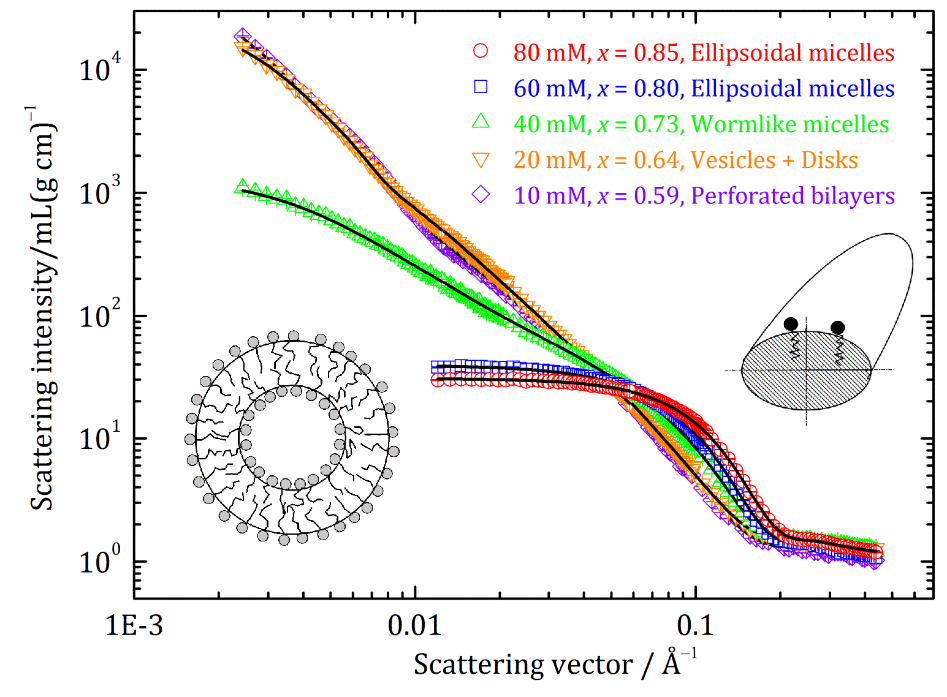Self-assembly of amphiphilic molecules: The interface between scatter-ing studies and bending elasticity theory
L. Magnus Bergström, Department of Pharmacy, Uppsala University, Uppsala, Sweden
Info about event
Time
Location
iNANO AUD (1593-012), Gustav Wieds Vej 14, 8000 Aarhus C
L. Magnus Bergström, Department of Pharmacy, Uppsala University, Uppsala, Sweden
Self-assembly of amphiphilic molecules: The interface between scattering studies and bending elasticity theory
In recent years, the bending elasticity theoretical approach has proven particularly fruitful in the rationalization of micelles and bilayers formed in the process of self-assembling amphiphilic molecules. Small-angle neutron and x-ray scattering (SANS and SAXS) are powerful techniques to provide quantitative information of micellar and bilayer systems and, as a result, to test various theoretical predictions. The experimental observations that micelles are, in general, shaped as triaxial tablets with a distinct thickness, width and length have encouraged the development of the general micelle model, which is based on thermodynamics of self-assembly combined with bending elasticity theory. The general micelle model predicts, among other things, the existence of a second critical micelle concentration (second CMC), the location of which is determined by the three bending elasticity constants spontaneous curvature, bending rigidity and saddle-splay constant. Below the second CMC small micelles grow only weakly with surfactant concentration, whereas above the second CMC micelles grow strongly into long wormlike and threadlike micelles. In surfactant-surfactant and surfactant-phospholipid mixtures, an abrupt transition from micelles to bilayers, which may be predicted from bending elasticity theory, is usually observed. According to theory, the location of the transition is determined by the spontaneous curvature and bending rigidity of the surfactant system. Molecular models of the bending elasticity constants demonstrate that surfactants with a rigid hydrophobic part (e.g. drug surfactants and bile salts) have considerably higher spontaneous curvature, as well as lower bending rigidity, than surfactants with a flexible hydrophobic part (e.g. conventional surfactants and phospholipids). As a result, surfactants with rigid tails are predicted to solubilize phospholipids more easily, by means of forming mixed micelles, than conventional surfactants, in agreement with experimental observations.

The lecture is part of the symposium Recent progress in small-angle scattering from soft matter and biological systems on the occasion of Professor Jan Skov Pedersen's 60th birthday.
